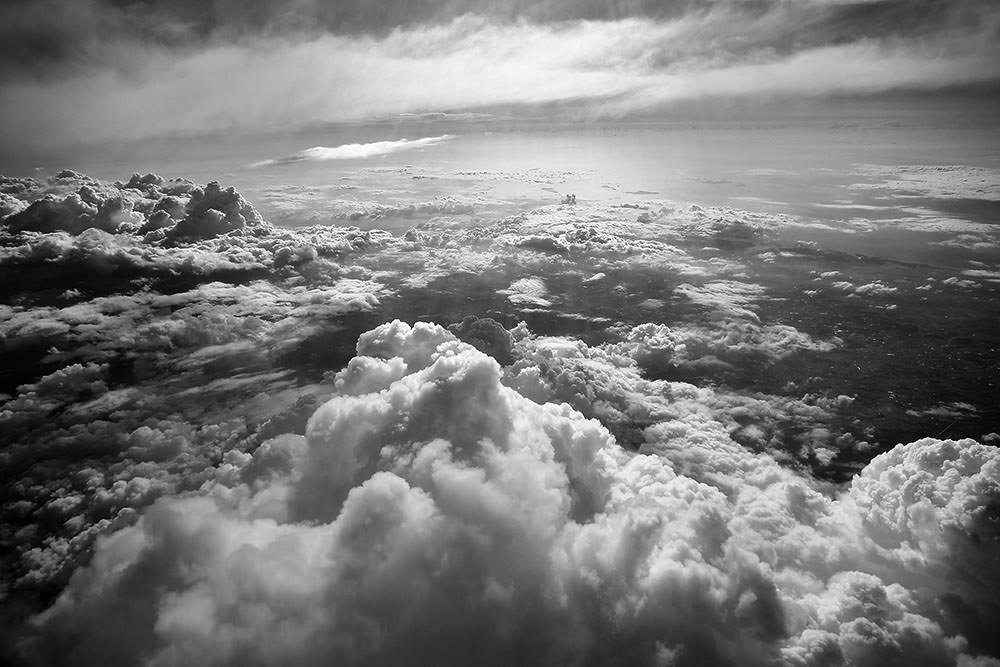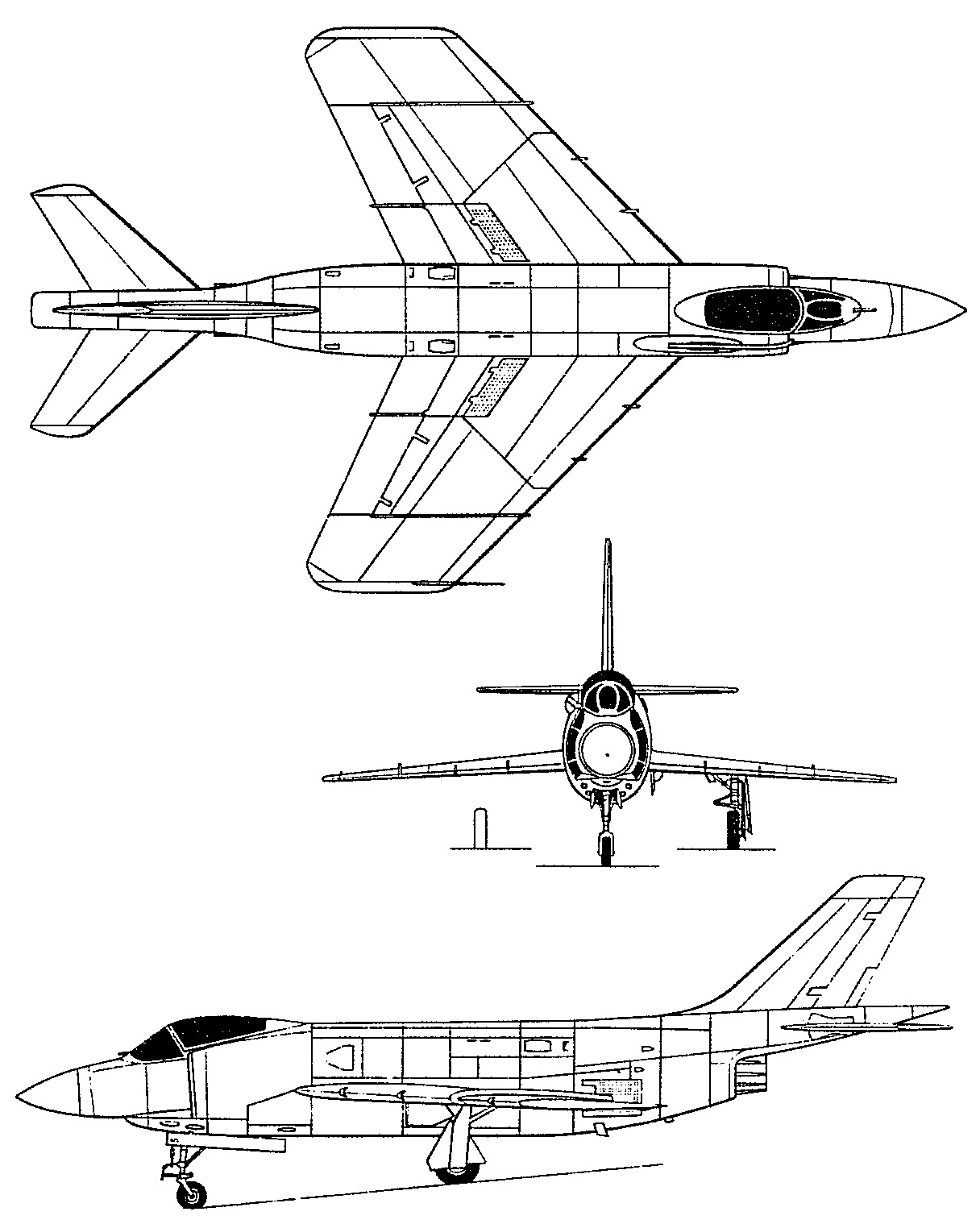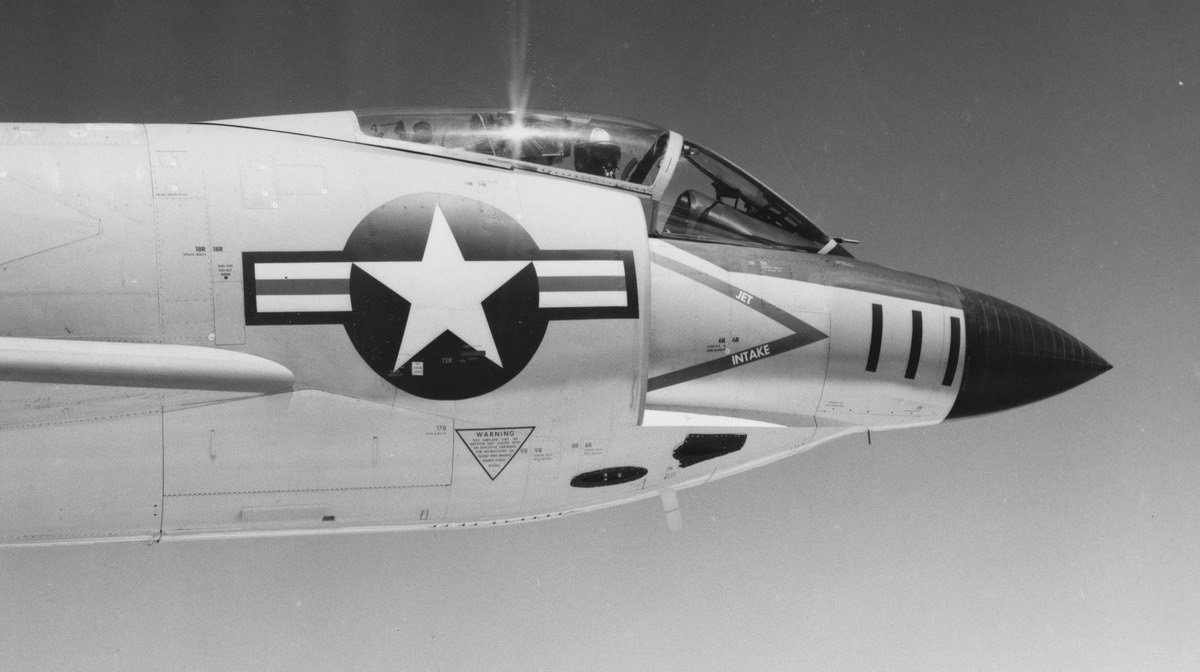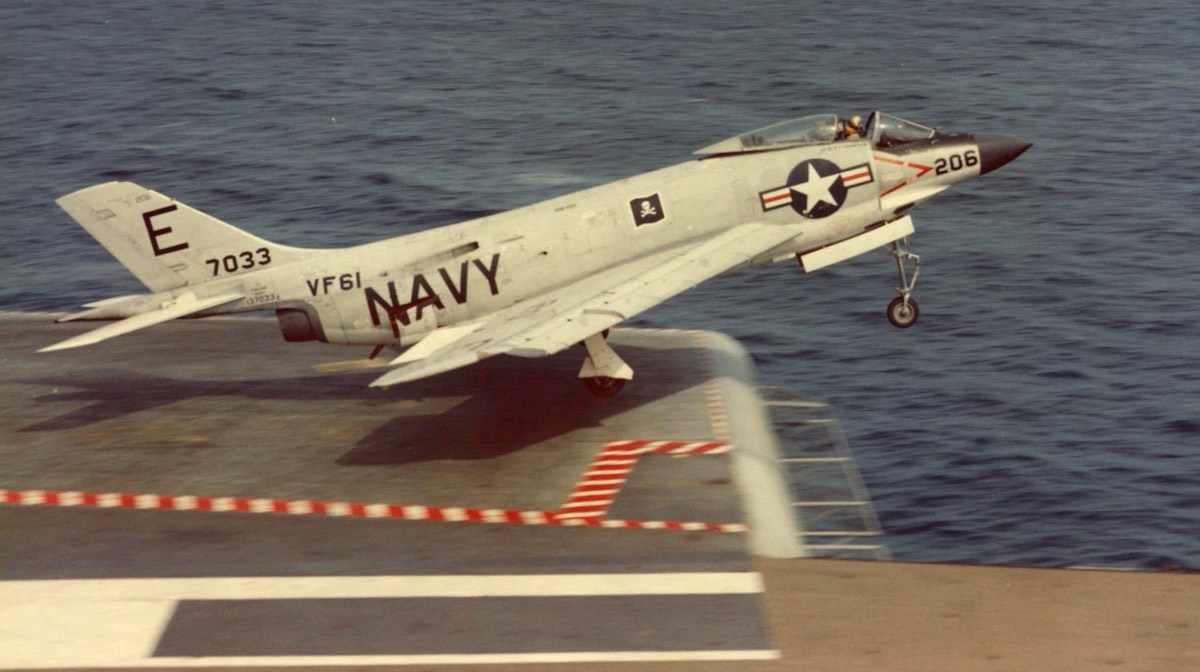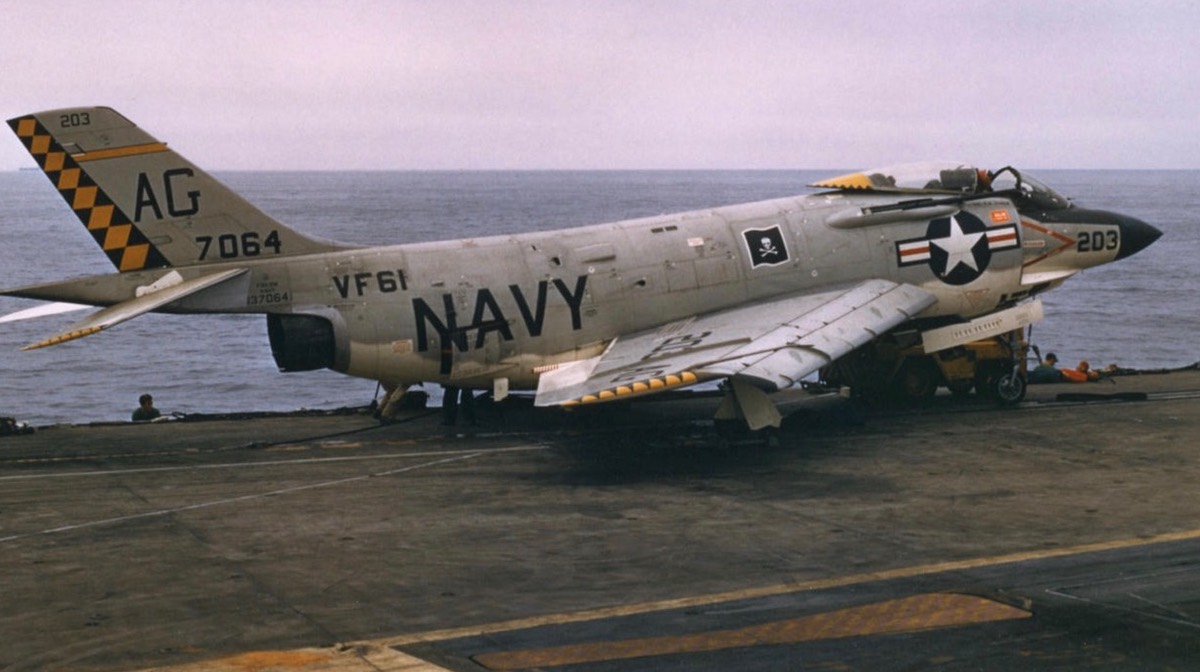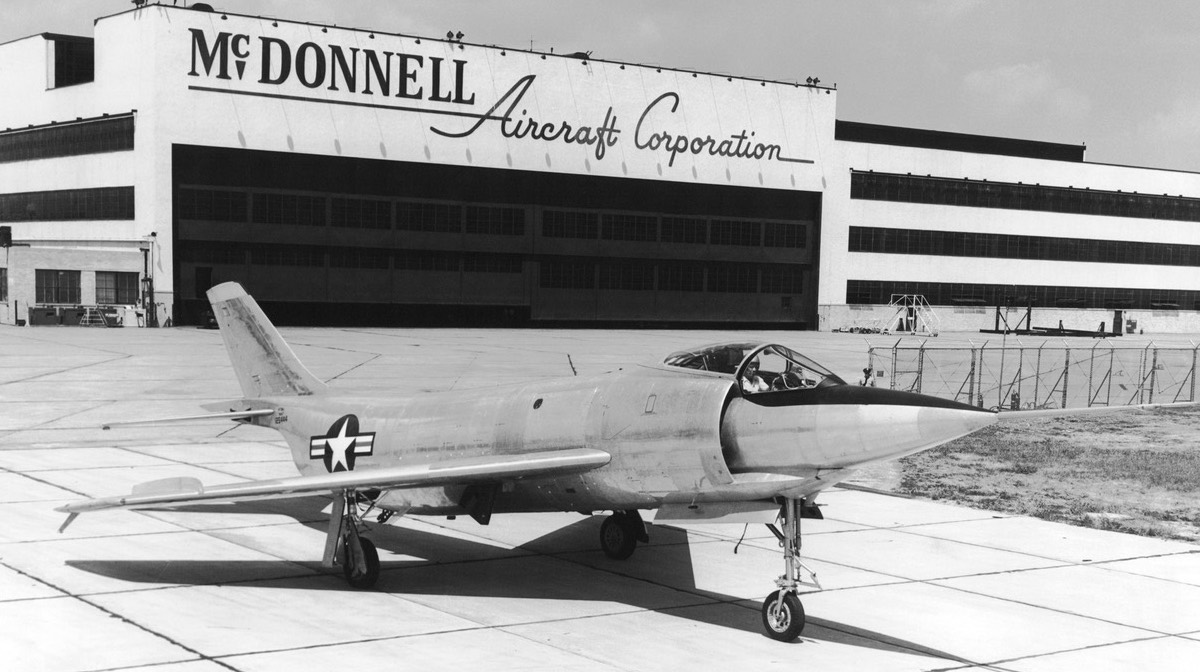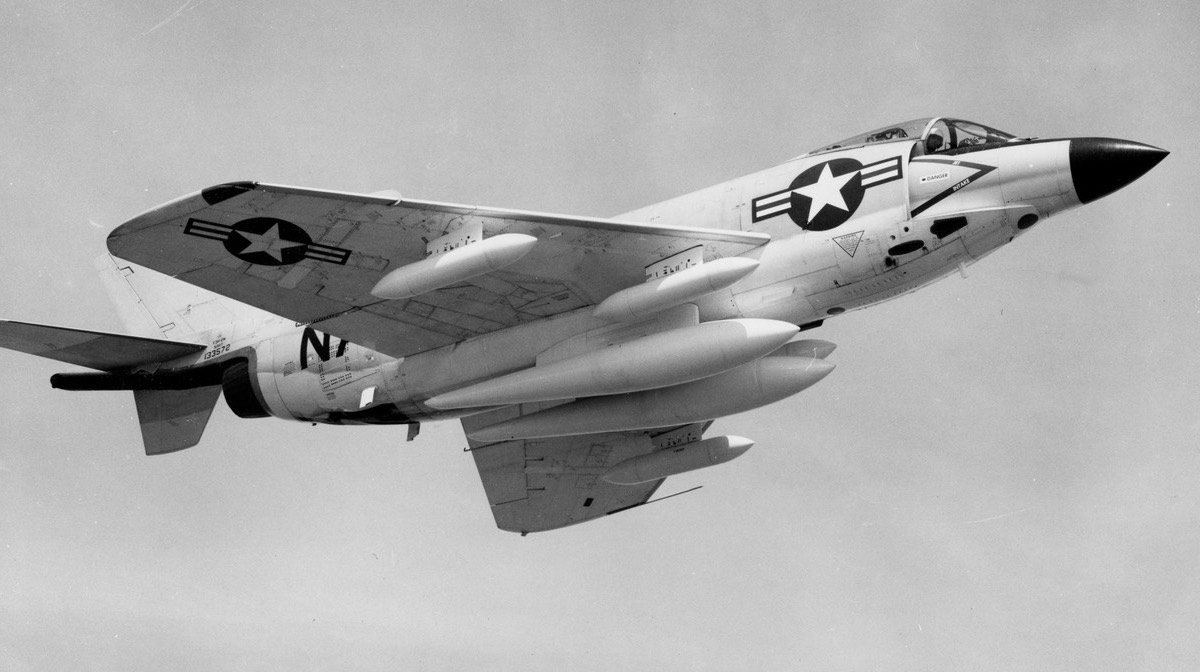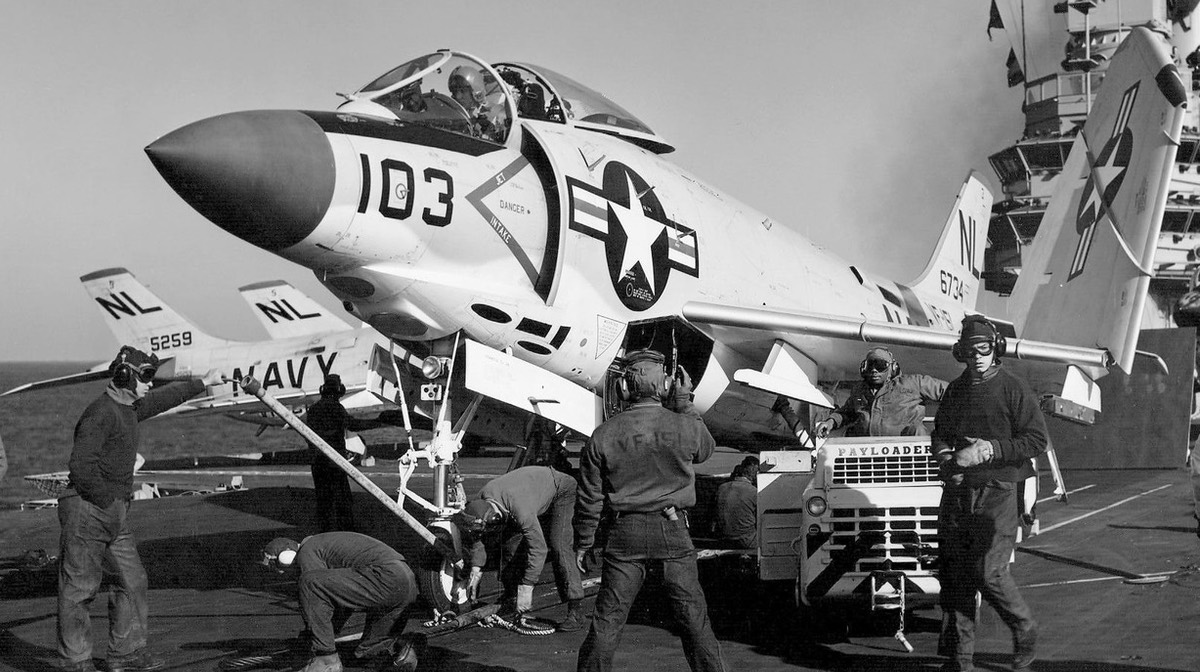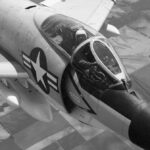By Thomas G. Foxworth
The Demon design came to fruition during the Korean conflict. It made its first flight at the McDonnell plant at Lambert Field, St. Louis, Missouri on 7 August 1951. Thus it was a contemporary of the Douglas F4D Skyray. Whereas the F4D was designed to be a lightweight, high performance interceptor, the F3H Demon was built to fulfill a complementary but essentially different role, that of missile launching, all-weather fighter. Air-to-air guided missiles, heavy and requiring complex fire control systems, were just coming into service at the same time as the Demon. In order to carry the missiles and associated equipment necessary to launch them, the airborne platform had to be large and rugged. Hence the Demon’s ungainly size. The Navy’s requirement was for a single seat fighter that could do the job and still operate from carriers.
Westinghouse’s XJ-40 afterburning turbojet engine, which was rated at 7500 pounds thrust and passed its 150 hour ground qualifying run in 1951, was the engine around which the Demon was designed. But the engine proved to be a frustrating source of problems. The first prototype was destroved shortly after its first flight. Several subsequent prototypes employed redesigned inlets, and the engine was modified through the XJ-40-WE-6 version, flown in flight test, and the -WE-8 version. The latter was installed on the first sixty production F3H-1N Demons. Carrier trials were flown in 1953.
The 61st production Demon, beginning the F3H-2 series, used the Allison J-71-A-2 powerplant, initially rated at 9200 pounds thrust. Variants of this model included the F3H-2P (photo-recon version), the F3H-2N (limited all-weather fighter version) and the F3H-2M (missile launcher). An AH-1 attack fighter version was projected, and an F3H-3 was to have had the General Electric J-73-GE-3 engine of 9200 pounds thrust.
A total of 597 Demons were ordered but construction of at least 148 of these was cancelled in October 1954. The allocated BuNo’s were: 125444445 (for two prototypes), 133489-638, 136966-137032 (as F3H-2N), 137033-095 (as F3H-2M), 143403-492, 145202-306, 146328-339, 146709-816.
The Demon’s wing was swept 40° and carried power-actuated slats and slotted trailing edge flaps. The jet pipe was cut back beneath the empenage to reduce thrust losses. For the F3H-2, gross weight was 33,900 lbs, span 35′ 4″ and length 58′ 11″. Top speed was 647 mph. Vmax for the F3H-IN was given as 758 mph, the Demon being basically a transonic airplane. Rate of climb was over 12,000 feet per minute. On 13 February 1955, an F3H-IN piloted by McDonnell test pilot C. V. Braun set an unofficial time-to-climb mark by reaching 10,000 feet in 71 seconds, a not unimpressive mark for the huge Demon. By way of comparison, just ten days later the F4D Skyray did the 10,000 feet in 56 seconds.
Meanwhile, on 13 February 1953, the first full guided flight of the Sparrow III missile (armament for the F3H-2M) took place at Naval Air Missile Test Center, Pt. Mugu, California. This followed the first flight, 3 September 1952, of the Side winder air-to-air missile (armament of the F3H-2N). Operational evaluation of the Sparrow III began on 14 February 1957 with F3H aircraft assigned to VX-4. On 8 December 1958, the first firing of a Sparrow IlI by a deployed squadron was made by VF-64, flying from the Midway. Eleven days later, VF-193, flying from the Bon Homme Richard, conducted a similar exercise. Both carriers were serving with the 7th Fleet in the Western Pacific.
Fleet assignment of the F3H-2N began on 7 March 1956 with delivery of six of these aircraft to VF-14, Top Hatters, at NAS Cecil Field, Florida. On 17 May 1957, four F3H’s, along with four F8U’s, flew the Atlantic non-stop to demonstrate the feasibility of delivering fleet squadron jet fighters from east coast stations to the 6th Fleet in the Mediterranean.
Launched by an F3H on 3 September 1957, the XKDT-1 solid propellant rocket-powered target drone made its first flight over NAMTC, Pt. Mugu. And on 8 April 1958, airborne firing tests of HIPEG (High Performance External Gun), pod mounted on an F3H-2N, were conducted at Naval Air Ordnance Test Station, Chincoteague, Virginia. This was a twin barrel, high speed, 20 mm machine gun developed for pod mounting.
In the early 1960s, the superlative F-4 Phantom, capable of both the interceptor and missile launcher roles, replaced the F3H and F4D aircraft in the Fleet. The Demon remained in first line service until 1965.
Purchase the McDonnell F3H Demon PDF eBook
Our 2,121 page McDonnell F3H Demon PDF eBook features 3 Wings & Airpower aviation history magazines, 7 official flight manuals and documents, and over 380 photos of this Cold War era subsonic carrier-based naval fighter jet.
